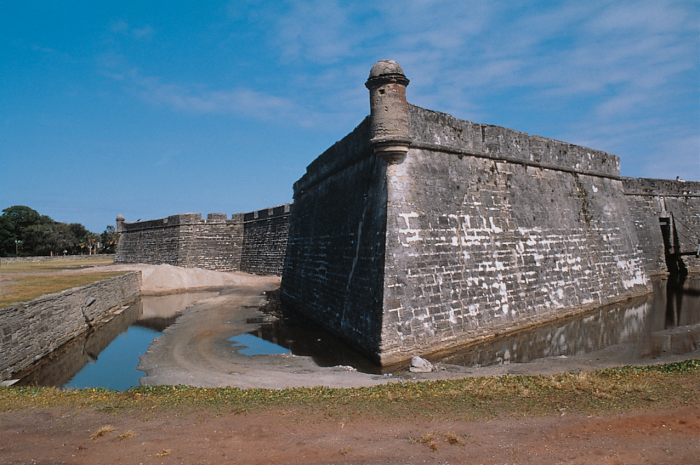



フロリダ州セントオーガスティンのカスティーヨ デ サン マルコス国定公園は、17 世紀の歴史的、文化的、構造的、土木工学的なランドマークです。公園管理者のゴーディ ウィルソンは、国立公園局の南東地域と協力して、砦での長距離監視活動を開始しました。目標は、200 年にわたって砦の壁の一部を悩ませてきた移動とその結果生じた亀裂の原因をより深く理解することです。
砦の稜堡は土を盛った石積みの城壁で、浅い基礎の上に建てられています。4 つの稜堡のうち 2 つには、1800 年代初頭から亀裂が見られます。基礎と土壌支持力の両方を徹底的に調査した結果、砦の基礎は構造的に健全であるはずです。壁の構造は土を盛る限界に近づいているという説が浮上しています。雨水の浸入により壁の内部負荷が増加し、構造が移動する可能性があります。この説を調査するために設計チームが結成されました。建築家 Grieves Worrall Wright & O'Hatnick が率いるチームは、公園の監視に次のことを提案しました。
- 3次元の既存の亀裂
- 大きな亀裂間の大きなセグメントの傾斜
- 2つのレベル(地表近くと16フィートの深さ)での要塞内の土壌水分の変化
- 現場の気象条件が地質工学活動に与える影響を評価する
監視装置は複数のベンダーから調達しました。Campbell Scientific はデータロガー、マルチプレクサ、気象ステーション、土壌水分プローブを提供しました。この装置は Geokon (ニューハンプシャー州レバノン) が製造し設置した亀裂および傾斜センサーと統合されました。AMJ Equipment (フロリダ州レイクランド) と PSI Engineering (フロリダ州ジャクソンビル) は技術支援と設置支援を提供しました。公園の美観への影響を抑えるため、公園のメンテナンス スタッフの協力を得て、ケーブルはカスタム コンジットに隠されました。
センサーは午前 5 時と午後 5 時に測定され、データは CR10X によって保存されます。四半期ごとに、CR10X に保存されたデータは電話モデム経由でエンジニアと建築家のオフィスにあるコンピューターにダウンロードされ、分析と解釈に使用されます。このプロジェクトでは、5 年から 10 年にわたってデータを収集する予定です。
ケーススタディの概要
アプリケーション
サンマルコス城の保存を支援するために、構造上のひび割れ、土壌水分、気象条件を監視する場所
カスティージョ デ サン マルコス国定公園、フロリダ州セントオーガスティン、米国使用製品
CR10X寄稿者
David Wright, architect Grieves Worrall Wright & O'Hatnick参加団体
国立公園局計測項目
亀裂に沿ったxyzの動き、傾斜、土壌水分、気象条件関連ウェブサイト
Castillo de San MarcosPDFで見る